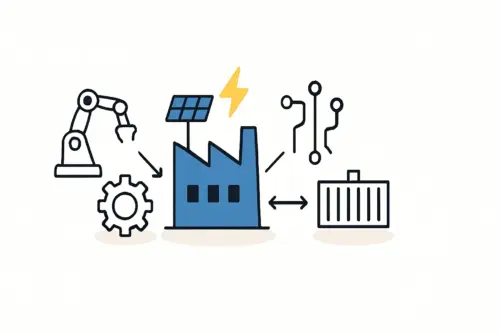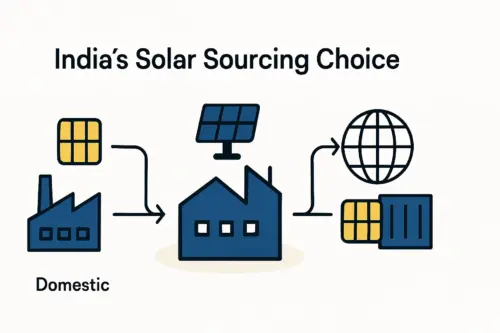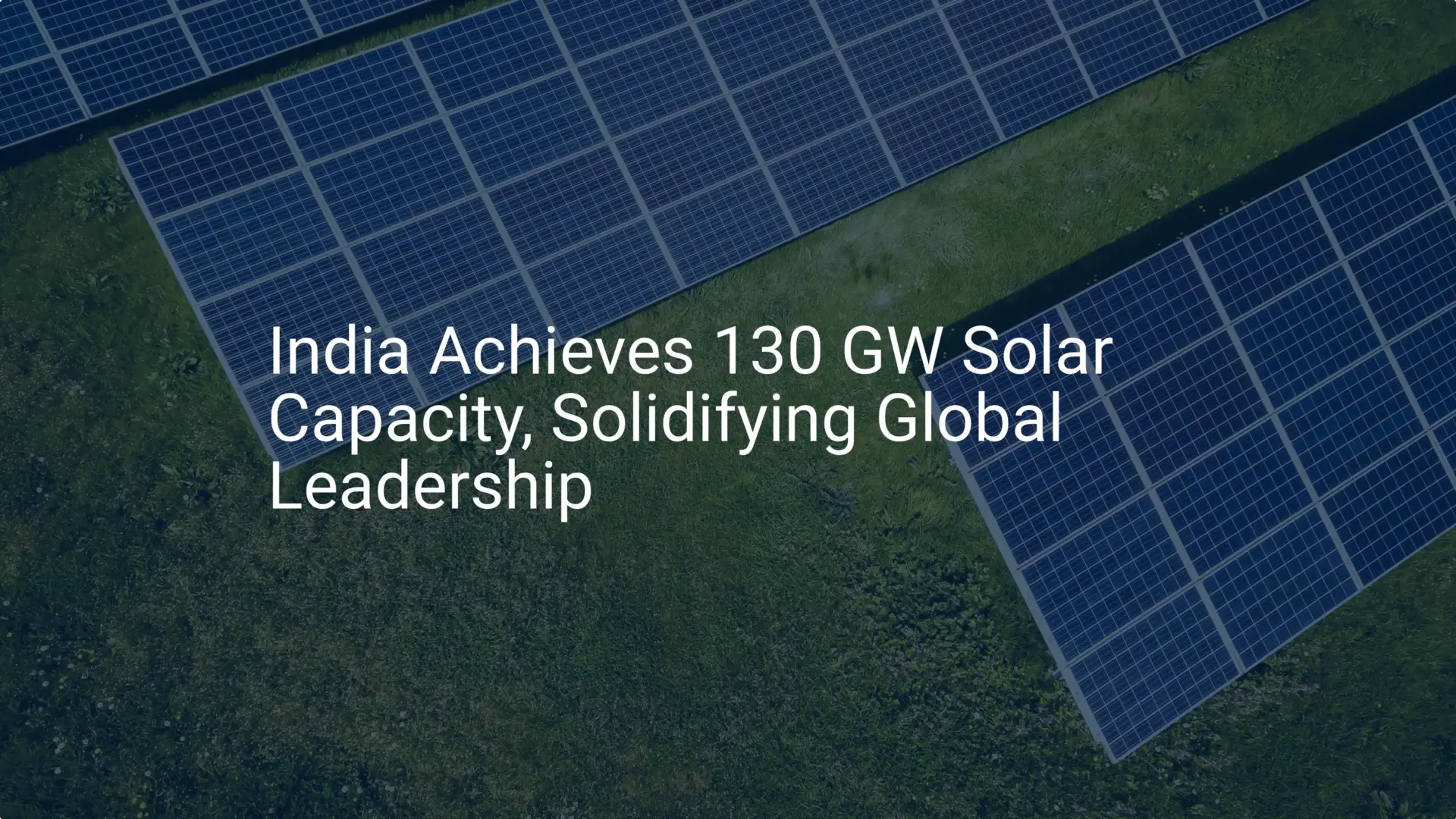With a population exceeding 240 million, the Indian state of Uttar Pradesh has a unique economic landscape. It is not only India’s most populous state but also home to its largest agricultural sector, which employs nearly 60% of the workforce.
This vast agrarian economy, however, faces a significant challenge: a persistent power deficit that hampers productivity and economic growth. For the discerning investor, this challenge represents one of the most substantial renewable energy opportunities in the world today.
This guide provides a strategic overview for business professionals considering entry into the solar manufacturing market in Uttar Pradesh. It focuses on the opportunity to supply government-backed initiatives for agricultural and rural electrification, explaining the market drivers, operational challenges, and technical requirements for success.
Understanding Uttar Pradesh: The Scale of Demand
Grasping the opportunity begins with understanding the local context. The economy of Uttar Pradesh is deeply intertwined with agriculture. Yet, unreliable grid electricity forces millions of farmers to depend on expensive and polluting diesel-powered water pumps for irrigation. This dependency creates a severe operational bottleneck and financial strain on the very backbone of the state’s economy.
Recognizing this, the Indian government has launched ambitious programs to solarize agriculture, creating a direct and sustained demand for high-quality solar modules. This is not a speculative future market but a present-day need backed by significant state and central government funding.
Government Initiatives as a Market Catalyst: The PM-KUSUM Scheme
The primary driver of this demand is the Pradhan Mantri Kisan Urja Suraksha evam Utthaan Mahabhiyan (PM-KUSUM) scheme. This national policy is designed to provide farmers with energy and water security, reduce their reliance on diesel, and generate additional income from solar power.
The scheme is structured into three key components relevant to module manufacturers:
-
Component A: Farmers can set up grid-connected solar power plants on barren land.
-
Component B: Installation of standalone, off-grid solar-powered agriculture pumps.
-
Component C: Solarization of existing grid-connected agriculture pumps.
For new manufacturers, Component B is the most immediate and large-scale opportunity. The government facilitates the adoption of these solar pumps through substantial financial support, typically covering 30% of the cost from the central government and an additional 30% from the state government. This 60% subsidy makes the transition to solar highly attractive for farmers and creates a reliable, high-volume market for module suppliers who can win public tenders.
The 2.15 Million Solar Pump Target
The Government of Uttar Pradesh has set a monumental target: the installation of 2.15 million new solar water pumps by the 2026-27 fiscal year. As of early 2024, only around 58,000 pumps have been installed, highlighting an enormous gap between the current supply and the state’s official goal. This gap translates into a clear and quantifiable demand for locally produced solar modules over the coming years.

Navigating the Public Procurement Landscape
While the demand is clear, winning government contracts requires more than just manufacturing capacity. The public procurement process in India is rigorous and detail-oriented. Prospective suppliers must be prepared to navigate complex tender documents, meet stringent eligibility criteria, and provide performance guarantees.
Quality, Certification, and Long-Term Performance
A critical requirement for participating in government tenders is Bureau of Indian Standards (BIS) certification for solar modules. This is a non-negotiable quality benchmark. Contracts also often include clauses for long-term performance warranties. Suppliers are not just selling a product; they are guaranteeing its energy output for years to come in one of the most demanding climates on earth.
For investors, this is a crucial point. Supplying modules that degrade quickly under harsh conditions can lead to failed contracts, financial penalties, and reputational damage.
The Technical Imperative: Building for North India’s Climate
The climate of Uttar Pradesh and the broader North Indian region poses significant technical challenges for standard solar modules. The combination of extreme summer temperatures, high dust levels, and seasonal humidity creates an environment where module degradation can accelerate rapidly.
Industry data suggests that conventional solar panels can experience power degradation of 3-5% annually in such climates, far exceeding the typical 0.5-0.7% found in more temperate European conditions. For a government tender that requires a 25-year performance warranty, this high degradation rate is unacceptable and poses a major financial risk.
Why Robust Module Technology is Non-Negotiable
Success in this market hinges on producing modules specifically engineered for these conditions. Technologies such as DESERT+, developed through decades of experience in high-temperature and arid regions, are designed to minimize degradation. Key features often include:
-
Specialized encapsulants and backsheets that resist heat and humidity.
-
Robust glass and frame designs to handle dust abrasion and thermal stress.
-
Advanced cell technology that performs better at high ambient temperatures.
Using a proven solar panel production line capable of integrating these robust materials is not an optional upgrade; it is a fundamental requirement for building a sustainable business that can reliably serve the Indian public sector.

A Strategic Framework for Entry
Entering a market of this scale requires a well-defined strategy, starting with a comprehensive solar business plan that outlines everything from factory setup and supply chain logistics to the tender application process.
Establishing a Local Manufacturing Presence
Setting up a local factory in Uttar Pradesh offers significant advantages. It demonstrates a commitment to the local economy, simplifies logistics, reduces transportation costs, and makes it easier to comply with ‘Make in India’ policies often favored in public tenders.
For an entrepreneur or company new to the industry, the initial scale can be manageable. Based on experience from J.v.G. turnkey projects, a 20–50 MW factory is a highly effective entry point. Such a setup can often be operated with a lean team of fewer than 30 employees, making the initial investment and operational overheads more accessible.
The Role of Experienced Guidance
For business professionals without a deep technical background in photovoltaics, partnering with an experienced consultant is crucial. The complexities of factory planning, technology selection, and navigating the Indian regulatory environment can be overwhelming.
Guidance from firms with a long track record, whose principals have been implementing solar projects since the 1990s, can de-risk the investment. They offer structured support through proven blueprints for turnkey solar manufacturing lines, ensuring the facility is optimized for the specific demands of the target market.

Frequently Asked Questions for Market Entry in Uttar Pradesh
What is the primary driver for solar demand in Uttar Pradesh?
The most significant and reliable driver is the government’s PM-KUSUM scheme, which aims to solarize the state’s massive agricultural sector. The target of installing 2.15 million solar water pumps creates a direct, high-volume demand for modules.
What are the main challenges for a new manufacturer?
The primary challenges are successfully navigating the complex government tender process, meeting mandatory BIS quality certifications, and producing modules that can withstand the harsh North Indian climate to fulfill long-term performance guarantees.
Is a large factory required to start?
No. A small to medium-sized factory with an annual capacity of 20–50 MW is an effective and manageable starting point. This scale is sufficient to compete for tenders without requiring an excessively large initial capital investment.
What kind of certifications are needed?
For government contracts, BIS (Bureau of Indian Standards) certification is mandatory. This certification ensures the modules meet specific quality and safety standards required for the Indian market.
How important is the specific module technology?
It is critically important. Standard modules are not designed for the extreme heat, dust, and humidity of the region and will likely fail to meet long-term performance warranties. Understanding the complete solar panel manufacturing process and selecting robust materials like those in DESERT+ technology is essential for long-term success.
Your Next Steps in Exploring the Indian Solar Market
The opportunity to establish a solar module factory in Uttar Pradesh is substantial, driven by clear government policy and immense underlying demand. Success, however, is not automatic. It requires a strategic approach grounded in a deep understanding of the local market, a commitment to quality, and the implementation of technology proven to perform in demanding environments.
For investors and entrepreneurs, the path forward involves diligent research, detailed financial planning, and securing expert guidance to navigate the technical and bureaucratic landscape. By focusing on these fundamentals, your new manufacturing venture can be well-positioned to become a key player in India’s rural energy transformation.






